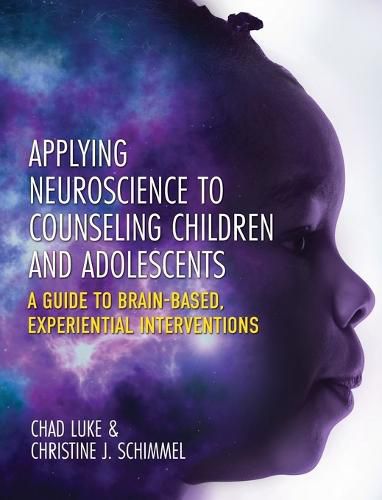Readings Newsletter
Become a Readings Member to make your shopping experience even easier.
Sign in or sign up for free!
You’re not far away from qualifying for FREE standard shipping within Australia
You’ve qualified for FREE standard shipping within Australia
The cart is loading…






This title is printed to order. This book may have been self-published. If so, we cannot guarantee the quality of the content. In the main most books will have gone through the editing process however some may not. We therefore suggest that you be aware of this before ordering this book. If in doubt check either the author or publisher’s details as we are unable to accept any returns unless they are faulty. Please contact us if you have any questions.
Applying Neuroscience to Counseling Children and Adolescents: A Guide to Brain-Based, Experiential Interventions explores the neurobiological underpinnings of child and adolescent development and encourages readers to apply neuroscience-informed interventions and strategies to counseling practice.
The book provides an overview and foundational perspective on neuroscience-informed child and adolescent counseling; covers models and modes of counseling from a neuroscience perspective; and examines common clinical presentations when working with children and adolescents. Individual chapters address ethical and cultural considerations, counseling theory and neuroscience, neuroscience of play, using neuroscience in working with parents and caregivers, and neuroscience-informed interventions to treat anxiety, depression, stress, trauma, substance misuse, and attention and behavioral issues.
Each chapter features two primary cases, one for a young child and one for an adolescent, conceptualized from real-life clients. The chapters present practical interventions and a sample of counselor-client dialogue to help readers understand how an intervention might unfold during a session.
Applying Neuroscience to Counseling Children and Adolescents bridges the gap between textbooks that cover neuroscience and counseling children and adolescents independently. It is an ideal supplemental text for courses on incorporating neuroscience in counseling.
$9.00 standard shipping within Australia
FREE standard shipping within Australia for orders over $100.00
Express & International shipping calculated at checkout
This title is printed to order. This book may have been self-published. If so, we cannot guarantee the quality of the content. In the main most books will have gone through the editing process however some may not. We therefore suggest that you be aware of this before ordering this book. If in doubt check either the author or publisher’s details as we are unable to accept any returns unless they are faulty. Please contact us if you have any questions.
Applying Neuroscience to Counseling Children and Adolescents: A Guide to Brain-Based, Experiential Interventions explores the neurobiological underpinnings of child and adolescent development and encourages readers to apply neuroscience-informed interventions and strategies to counseling practice.
The book provides an overview and foundational perspective on neuroscience-informed child and adolescent counseling; covers models and modes of counseling from a neuroscience perspective; and examines common clinical presentations when working with children and adolescents. Individual chapters address ethical and cultural considerations, counseling theory and neuroscience, neuroscience of play, using neuroscience in working with parents and caregivers, and neuroscience-informed interventions to treat anxiety, depression, stress, trauma, substance misuse, and attention and behavioral issues.
Each chapter features two primary cases, one for a young child and one for an adolescent, conceptualized from real-life clients. The chapters present practical interventions and a sample of counselor-client dialogue to help readers understand how an intervention might unfold during a session.
Applying Neuroscience to Counseling Children and Adolescents bridges the gap between textbooks that cover neuroscience and counseling children and adolescents independently. It is an ideal supplemental text for courses on incorporating neuroscience in counseling.